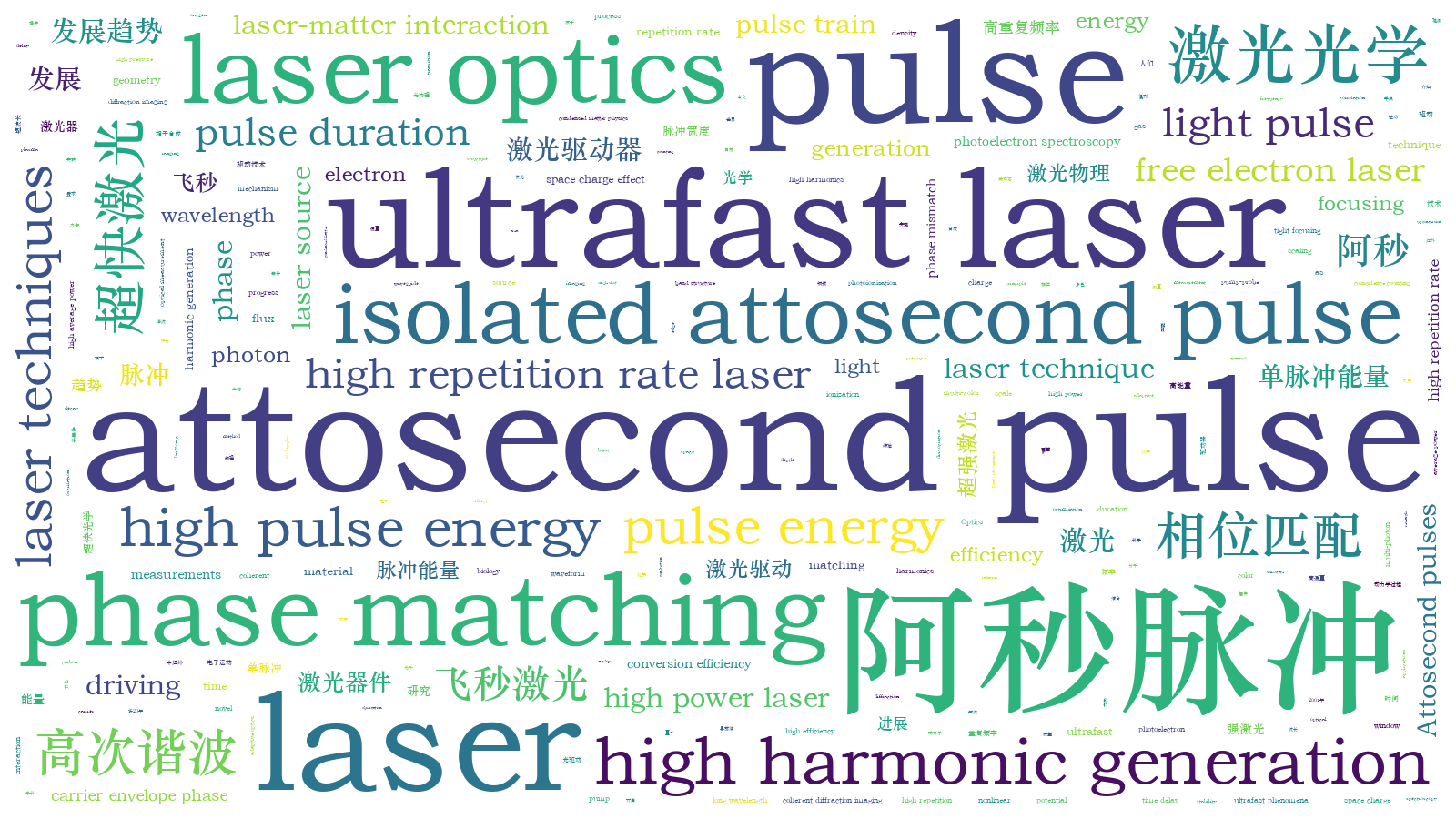阿秒光学进展及发展趋势  下载: 4157次封底文章特邀综述
下载: 4157次封底文章特邀综述
Significance Attosecond (1 as=10 -18 s) light pulses provide new approach to the basic mechanics in the quantum world in its natural time scale. A novel research area called attosecond science was opened up since the first observation of attosecond pulses in 2001. Owing to the advances of ultrafast laser techniques and the in-depth understanding of the attosecond pulse generation mechanism, a world record of 43 as light pulse has been demonstrated in 2017, which is shortest pulse ever obtained by human beings. Nowadays table-top attosecond sources based on high harmonic generation (HHG) have been routinely achieved by many groups worldwide. It is widely applied in the measurements of various ultrafast phenomena like photoionization time delay in atoms, molecules, and solids, electron correlation effects such as Fano resonance, Auger decay, and inner shell ionization, charge migration and dissociation in molecules, and manipulation of dielectrics. Attosecond pulses has achieved impressive progress in different fields such as atomic and molecular physics, condensed matter physics, chemistry, and biology in the past two decades.
Progress The limited photon flux of the attosecond pulses due to low conversion efficiency and phase mismatch of HHG process prevents the potential applications in multi-photon ionization, single shot coherent diffraction imaging, and attosecond pump-probe. HHG driven by TW or even PW high power laser is the straightforward way to generate intense attosecond pulses. Loose focusing geometry is proposed to overcome the over-ionized plasma that will destroy the phase matching process. Attosecond pulse with μJ pulse energy and 10 14W/cm 2power density is obtained using loose focusing geometry and adaptive optics. It serves as an alternative to free electron laser with shorter pulse duration and better stability to investigate ultrafast nonlinear phenomena.
Various gating technique is utilized to isolate singleattosecond burst from an attosecond pulse train. Few-cycle driving laser with stabilized carrier envelope phase (CEP) is typically required for isolated attosecond pulse (IAP) generation. Such driving laser with high pulse energy is still challenging even nowadays. The coherent synthesizer consisting of two-color or multi-color laser fields might produce “perfect” waveform to optimize the HHG conversion efficiency as well as relaxing the pulse duration limitation required for IAP gating. Sub-cycle light transients from waveform synthesizer which is ideal for IAP generation has also been demonstrated.
The so-called “water window” wavelength ranging from 2.3 nm to 4.4 nm between the K-edge of carbon and oxygen elements is very important in chemistry and biology. HHG in water window wavelength or even higher photon energy can be obtained using long wavelength driving laser combined with high gas density waveguide and transient phase matching to compensate the unfavorable scaling of HHG efficiency with driving laser wavelength. The world record of light pulse (43 as) is reported using mid-inferred driven HHG in 2017.
High repetition rate attosecond pulses are required to fulfill coincidence counting or to avoid space charge effect in precise photoelectron spectroscopy. According to the HHG scaling principle, tight focusing, and high pressure are needed to generate high harmonics using low pulse energy laser. The high repetition rate, high average power driving laser, and frequency up conversion technique make it an ideal source for high flux HHG.
HHG from solid phase material follows different mechanism with that from gas phase. The intraband HHG is due to the nonlinear radiation of the Bloch oscillation in the conduction band while the interband HHG is resulted from the transition between electron-hole pairs in different bands. It is not only a potential method to generate high efficiency harmonics, but also an important approach to the band structure and electron interaction of the material.
Conclusions and Prospects The frontier of attosecond science has been paved by the advances in the laser technique. 10 μJ attosecond pulse is obtained by loose focusing geometry of the intense driving laser and phase matching optimization. The mid-inferred driving laser enables the high photon energy HHG up to 1.6 keV and sub-50-as short attosecond pulse. The high repetition rate laser source allows >100 kHz attosecond pulse with photon flux as high as 1015 s-1 which is ideal for coincidence measurements. Last but not least, the recent progress of HHG in solid state material provides new approaches to both attosecond pulse generation and all optical measurement of laser-matter interaction. All these novel attosecond sources towards the true attosecond-pump-attosecond-probe measurements will give new insight into the microscopic mechanics in their natural time scale.
魏志义, 钟诗阳, 贺新奎, 赵昆, 滕浩, 王帅, 梁玥瑛, 王佶, 喻苏玉, 陈云琳, 朱江峰. 阿秒光学进展及发展趋势[J]. 中国激光, 2021, 48(5): 0501001. Zhiyi Wei, Shiyang Zhong, Xinkui He, Kun Zhao, Hao Teng, Shuai Wang, Yueying Liang, Ji Wang, Suyu Yu, Yunlin Chen, Jiangfeng Zhu. Progresses and Trends in Attosecond Optics[J]. Chinese Journal of Lasers, 2021, 48(5): 0501001.







